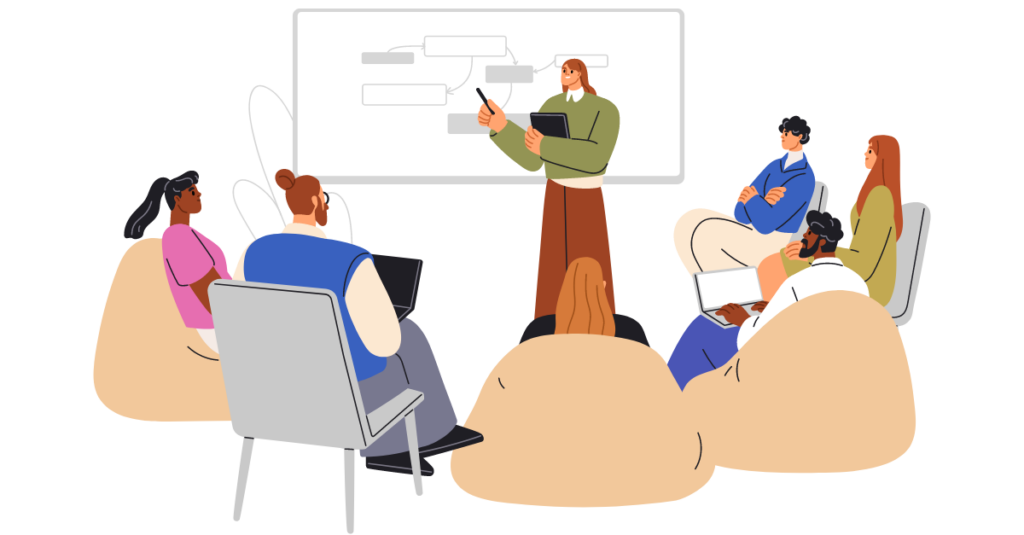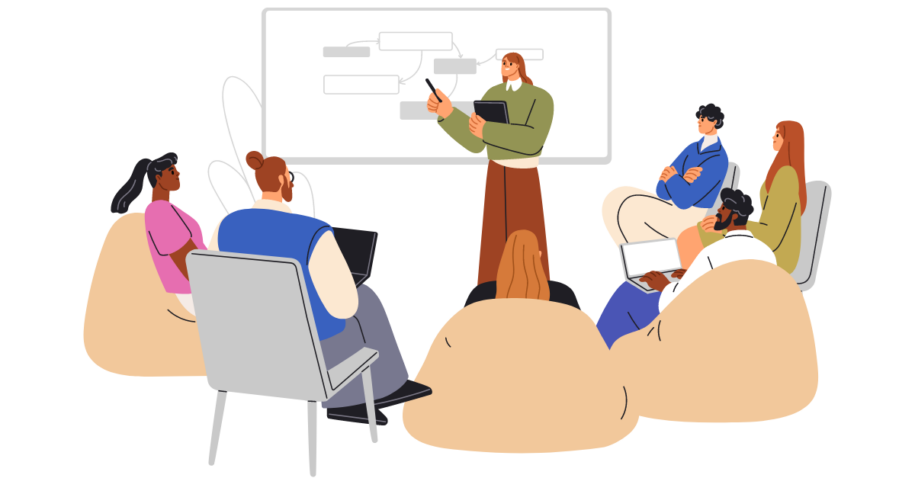How can you prevent conflict within your team?
Conflict management is an essential skill for ensuring a harmonious and productive working environment. Conflicts can arise at any time and for a variety of reasons, but it’s crucial to tackle them proactively and strategically. In this article, we’ll explore best practices for managing conflict in the workplace, drawing on expert advice and reliable sources.

Common causes of conflict in the workplace
Before diving into conflict management strategies, it’s important to understand the common causes of these disputes. Conflicts can be caused by :
- Differences in each employee’s personality and work style
- Misunderstandings between employees or ineffective communication
- Unmet expectations or conflicting objectives between managers and teams
- Limited resources or internal competition
- Organizational changes or uncertainties
Conflict management strategies
Open and transparent communication
Communication is the key to resolving conflicts. Encourage open and honest communication within your team. Create an environment where employees feel comfortable sharing their concerns and opinions without fear of repercussions. Good communication helps clarify misunderstandings and find mutually acceptable solutions.
Using mediation and arbitration
In some cases, mediation or arbitration may be necessary to resolve disputes. Mediation involves a neutral third party helping the conflicting parties to find an amicable solution, while arbitration involves a formal decision taken by an arbitrator. These methods can be particularly useful when disputes are complex or involve several parties.
Encouraging empathy and understanding
Encouraging employees to develop empathy and try to understand other people’s perspectives can help defuse conflicts. By understanding the motivations and concerns of others, it becomes easier to find solutions that meet the needs of all parties involved.
Stages of conflict management
Conflict identification
The first step in conflict management is to clearly identify the problem. This involves recognizing that a conflict exists, and understanding the points of view of all parties involved. Once the conflict has been identified, you can move on to the next step.
Conflict analysis
Analyze the root causes of the conflict. Try to understand why the conflict has arisen and what the main concerns of the parties involved are. This analysis enables us to formulate appropriate solutions and prevent similar conflicts in the future.
Searching for solutions
Involve the parties concerned in the search for solutions. Encourage them to come up with ideas and compromises. Working together to find a common solution strengthens collaboration and mutual respect.
Solution implementation
Once a solution has been found, it’s important to implement it effectively. Make sure all parties understand their roles and responsibilities in resolving the conflict, and monitor implementation to ensure success.
Conflict management: the importance of training and a structured framework
It is essential to train managers in conflict management. With the right training, managers can recognize the warning signs of conflict and deal with them proactively. Training can include communication, negotiation and conflict resolution techniques.
The CNFCE stresses the importance of a structured framework for conflict management. This includes establishing clear policies and procedures for conflict resolution. Having a structured framework allows conflicts to be dealt with consistently and fairly, reinforcing employee confidence in the process.
To sum up, here’s a table to help you easily identify each problem and potential solution:
|
Technical |
Description |
|
Open Communication |
Encourage employees to voice their concerns and actively listen. |
|
Mediation |
Use a neutral third party to help resolve conflicts. |
|
Training |
Train managers and employees in conflict management skills. |
|
Structured Frame |
Establish clear policies and procedures for conflict resolution. |
|
Empathy and understanding |
Encourage empathy and mutual understanding among employees. |
Good to know! quarksUp is an HRIS solution for managing the entire employee cycle.
Thanks to this HR tool, everything can be done online. As an HR manager, you’ll be in charge of all our employees’ digital activities. With its modular offer, quarksUp intervenes from recruitment to employee off-boarding.
You may also be interested in 😊

GPEC: Definition and implementation tools
What is GPEC (Gestion Prévisionnelle des Emplois et des Compétences) and how can it be implemented? quarksUp, expert in HRIS, answers your questions.

Annual appraisal interview: objective, grid
The annual appraisal interview is an opportunity to take stock of performance. quarksUp, expert in HRIS, guides you in preparing your objectives and evaluation grids.

